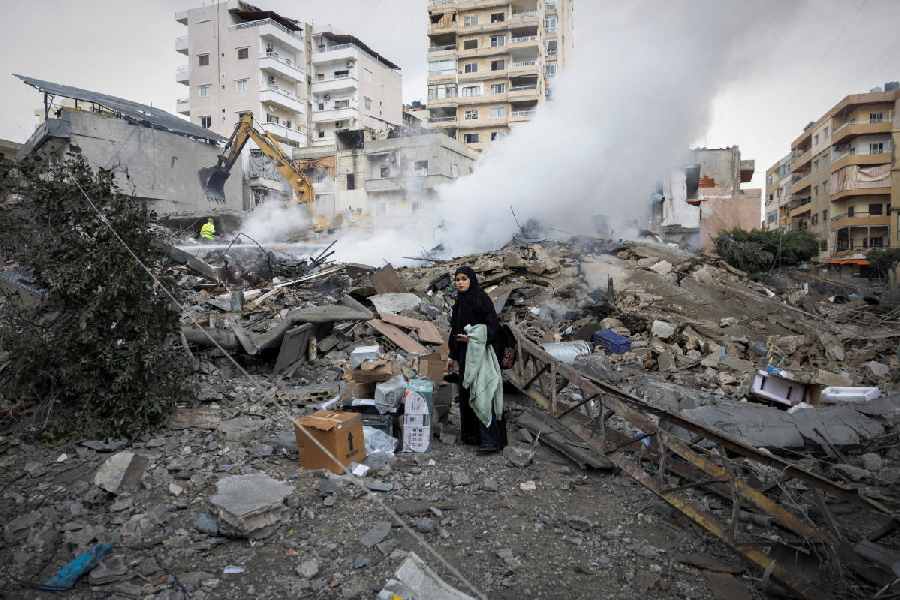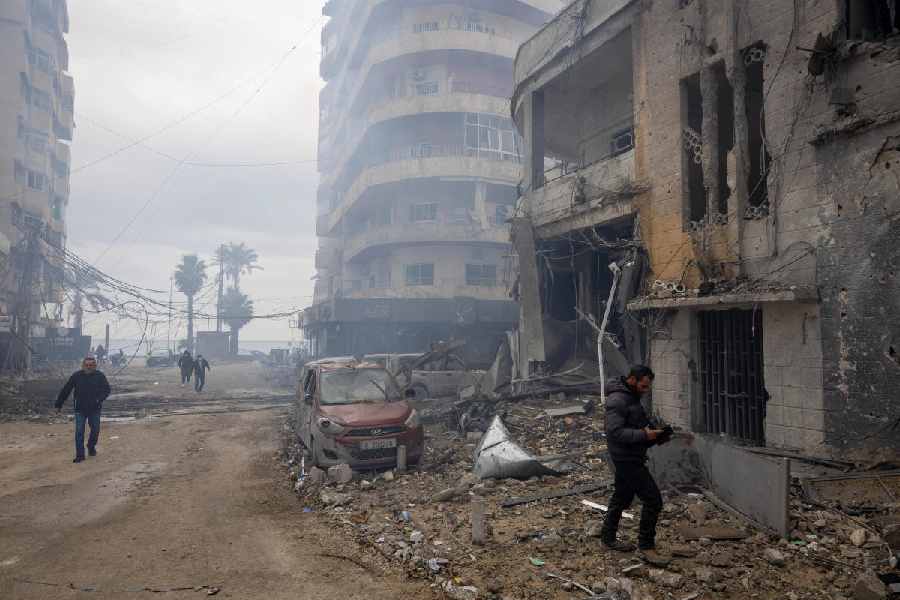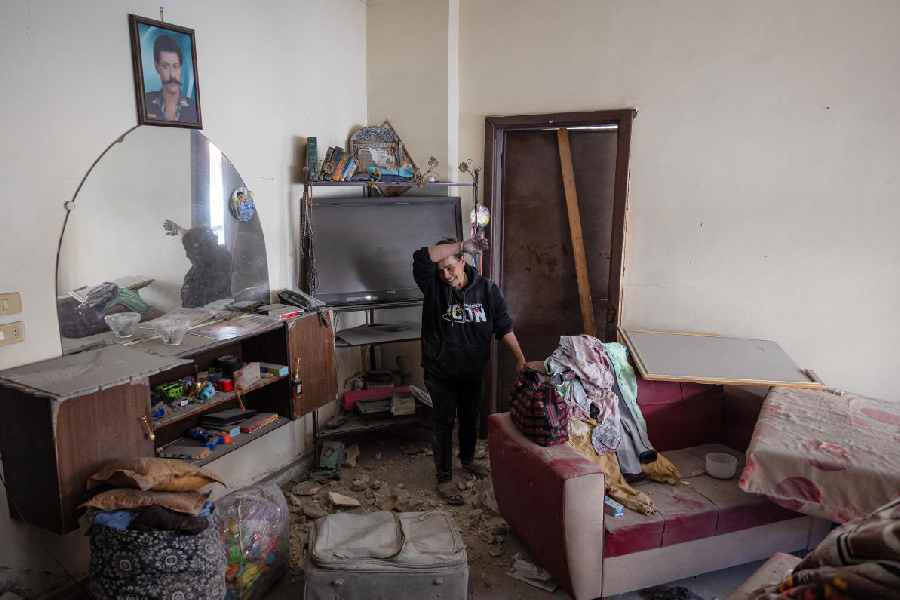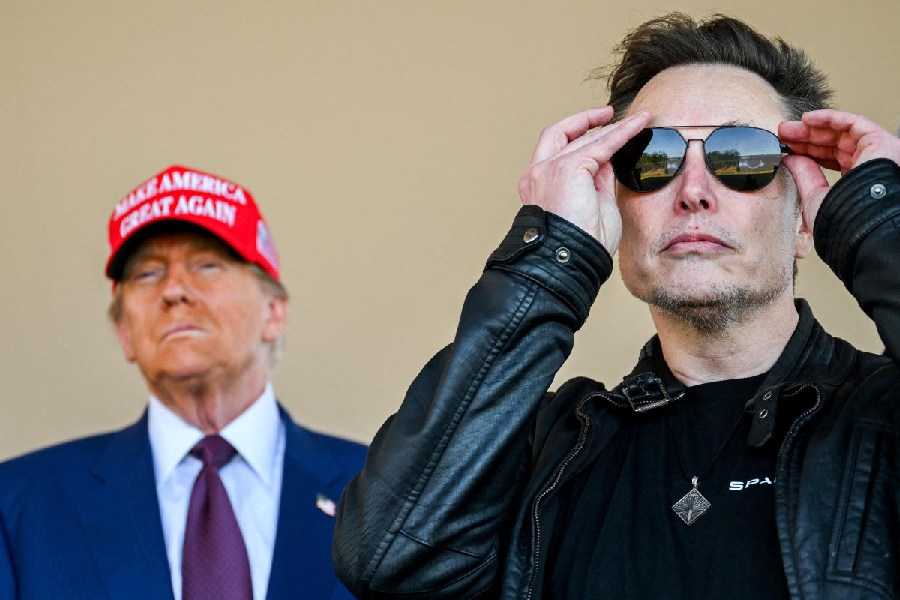 Friday, 03 January 2025
Friday, 03 January 2025
 Friday, 03 January 2025
Friday, 03 January 2025
Israel and Lebanese armed group Hezbollah started implementing a ceasefire on Wednesday as part of a U.S.-proposed deal for a 60-day truce to end more than a year of hostilities.
U.S. President Joe Biden announced the agreement, saying it was designed to be a permanent cessation of hostilities.
Here is a summary of its key provisions.
HALT TO HOSTILITIES
The halt to hostilities began at 4 a.m local time (0200 GMT) on Wednesday, with both sides ceasing fire on Wednesday morning.
The proposal calls for Israel to stop all military operations against Lebanese territory, including attacks on civilian and military targets as well as Lebanese state institutions, by land, sea, and air.
All armed groups in Lebanon - meaning Hezbollah and its allies - would halt operations against Israel, the text says.
Israel and Lebanon should recognise the importance of the United Nations Security Council Resolution 1701 to achieve lasting peace and security and commit to taking steps towards its full implementation, without violation.
That resolution ended the last round of conflict between Hezbollah and Israel in 2006 and stipulates that southern Lebanon must be free of arms that do not belong to the Lebanese state.
Upon the start of the ceasefire, Israel will withdraw its forces in a phased manner south of the Blue Line, and the Lebanese armed forces will deploy to positions in the Southern Litani area.

ISRAELI TROOPS WITHDRAW
The Israeli military would withdraw from southern Lebanon within 60 days. Biden said the troops would gradually pull out and civilians on both sides would be able to return home.
Lebanon had earlier pushed for Israeli troops to withdraw as quickly as possible within the truce period, Lebanese officials told Reuters. They now expect Israeli troops to withdraw within the first month, a senior Lebanese political source said.
The deal also includes language that preserved both Lebanon's and Israel's rights to self-defence, consistent with international law.
HEZBOLLAH PULLS NORTH, LEBANESE ARMY DEPLOYS
Hezbollah fighters will leave their positions in southern Lebanon to move north of the Litani River, which runs about 30 km (20 miles) north of the border with Israel.
Their withdrawal will not be public, the senior Lebanese political source said. He said the group's military facilities "will be dismantled" but it was not immediately clear whether the group would take them apart itself, or whether the fighters would take their weapons with them as they withdrew.
The Lebanese army would deploy troops to south of the Litani to have around 5,000 soldiers there, including at 33 posts along the border with Israel, a Lebanese security source told Reuters.
"The deployment is the first challenge - then how to deal with the locals that want to return home," given the risks of unexplored ordnance, the source said.
More than 1.2 million people have been displaced by Israeli strikes on Lebanon, many of them from south Lebanon. Hezbollah sees the return of the displaced to their homes as a priority, Hezbollah lawmaker Hassan Fadlallah told Reuters.
Tens of thousands displaced from northern Israel are also expected to return home.
Lebanon's state military and security forces, along with the UNIFIL peace-keeping mission, will be the only armed forces and facilities deployed in the southern Litani area.
Any sales, supply or production of arms related material into Lebanon will be regulated and controlled by the Lebanese government.

MONITORING MECHANISM
One of the sticking points in the final days leading to the ceasefire's conclusion was how it would be monitored, Lebanon's deputy speaker of parliament Elias Bou Saab told Reuters.
A pre-existing tripartite mechanism between UNIFIL, the Lebanese army and the Israeli army would be expanded to include the U.S. and France, with the U.S. chairing the group, Bou Saab said.
Israel would be expected to flag possible breaches to the monitoring mechanism, and France and the U.S. together would determine whether a violation had taken place, an Israeli official and a Western diplomat told Reuters.
A joint statement by Biden and French President Emmanuel Macron said France and the U.S. would work together to ensure the deal is applied fully.
The U.S. and France will work within the Military Technical Committee for Lebanon (MTC4L) to enable and achieve a total Lebanese armed forces deployment of 10,000 soldiers to southern Lebanon.
The Lebanese armed forces will deploy forces, set road blocks and checkpoints on all the roads and bridges along he line delineating the Southern Litani area.
Israel and Lebanon will report any alleged violations to the tripartite mechanism and UNIFIL.

UNILATERAL ISRAELI STRIKES
Israeli officials have insisted that the Israeli army would continue to strike Hezbollah if it identified threats to its security, including transfers of weapons and military equipment to the group.
An Israeli official told Reuters that U.S. envoy Amos Hochstein, who negotiated the agreement, had given assurances directly to Israeli Prime Minister Benjamin Netanyahu that Israel could carry out such strikes on Lebanon.
Netanyahu said in a televised address after the security cabinet met that Israel would strike Hezbollah if it violated the deal.
The official said Israel would use drones to monitor movements on the ground in Lebanon.
Lebanese officials is not in the deal that it agreed, and that it would oppose any violations of its sovereignty.
The provision is not in the deal published by the Lebanese cabinet and Lebanese officials say that it would oppose any violations of its sovereignty.







